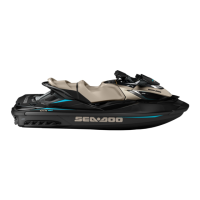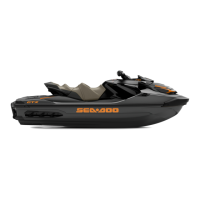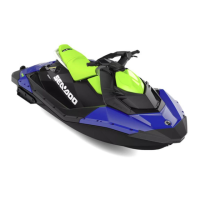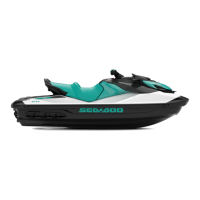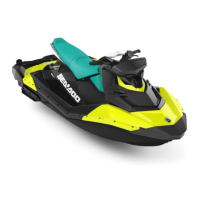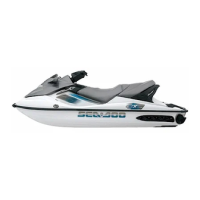Section 05 ELECTRICAL SYSTEM
Subsection 03 (CHARGING SYSTEM)
OUTPUT VOLTAGE
TEST USING A MULTIMETER
TEST ENGINE SPEED VOLTAGE (DC)
5500 RPM 14.5 ± .5 Vdc
If voltage is above specification, replace voltage
regulator/rectifier.
If voltage is below specification, check stator
output and wiring harness prior to concluding that
voltage regulator/rectifier is defective. Refer to
STARTING SYSTEM
subsection.
Testing the Output Current with an
Inductive Ammeter
Use an inductive ammeter that can read at least
200 Aac and 40 Adc current.
1. Turn on the ammeter a nd select 40 Adc.
NOTE: Zero set the ammeter before use or read-
ing may be erroneous.
VOLTAGE REGULATOR
RE1-1
smr201
6-031-003_a
2. Start engine.
NOTE: C
onnect a garden hose to cool exhaust
system
. Refer to
EXHAUST SYSTEM
subsection.
3. Increase engine RPM as specified in the follow-
ingtableandreadcurrentwiththeammeter.
TEST ENGINE
SPEED
CURRENT
5500 RPM Approx. 10 A
NOTE: Initial current reading will be higher than
specified due to the battery drain from the engine
start. This is an i ndication that the charging sys-
tem is operating normally. Current load will come
down as the battery recovers its charge.
If current reading is far below specification, test
stator output and wiring harness prior to conclud-
ing the voltage regulator/rectifier is faulty.
NOTE: If the battery is in poor condition or is not
at a full state of charge, current reading will be
above specification. Refer to
BATTERY
in this
subsection for battery testing.
TROUBLESHOOTING
DISCHARGED OR WEAK BATTERY
1. Battery posts and/or cable terminal oxidized.
- Clean battery terminals, posts, and coat with di-
electric grease.
2. Loose or bad connections.
- Check for wiring and connector tightness, frayed
or broken wires. Repair or replace cables or con-
nectors.
3. Worn or faulty battery (sulfated, fretting,
shorted plates or cell, damaged casing, loose
post).
- Test BATTE RY VOLTAGE (LOAD APPL IE D).
- Replace battery.
4. Burnt fuse(s) or faulty rectifier.
- First check fuse(s). If in good condition, check
voltage regulator/rectifier.
5. Faulty stator.
- Test stator and replace as required.
6. Parasiticor“KeyOff”currentloads.
- Isolate, reduce or eliminate s uch loads.
- Recharge battery as recomm ended if vehicle is
not used for extended periods of time.
NOTE: “ Key Off” or parasitic loads may be loads
due to installed acces sories. Parasitic loads may
also be due to wate r infiltration in connectors, or
partial short circ uits t hat slowly dra in a b attery
without causing a fuse to b urn.
LOW OR NO CHARGING SYSTEM
VOLTAGE
1. Blown F6 fuse.
- Check F6 fuse.
2. Defective stator.
- Test stator. Refer to STARTING SYSTEM subsec-
tion.
124 219100963-013
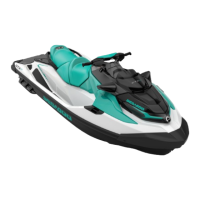
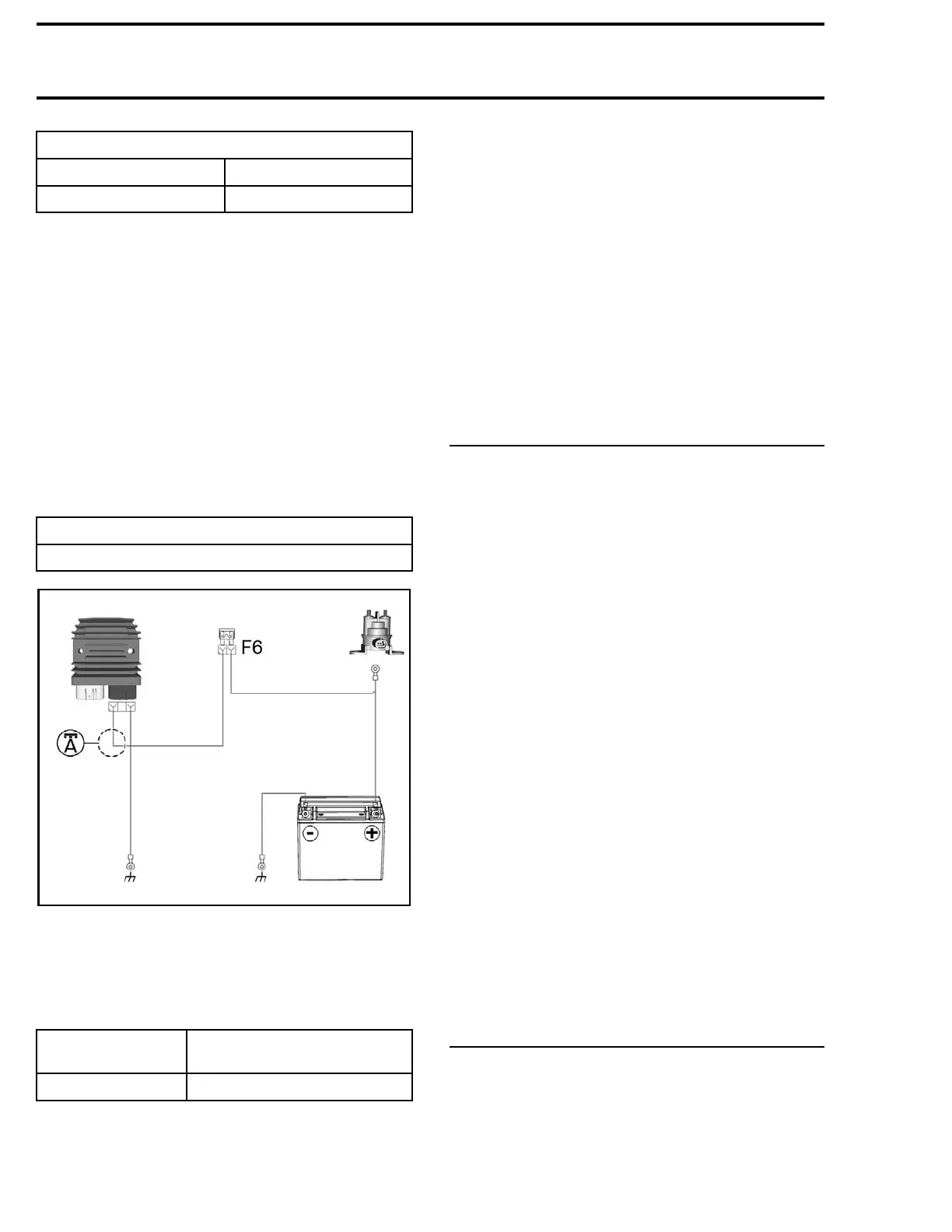